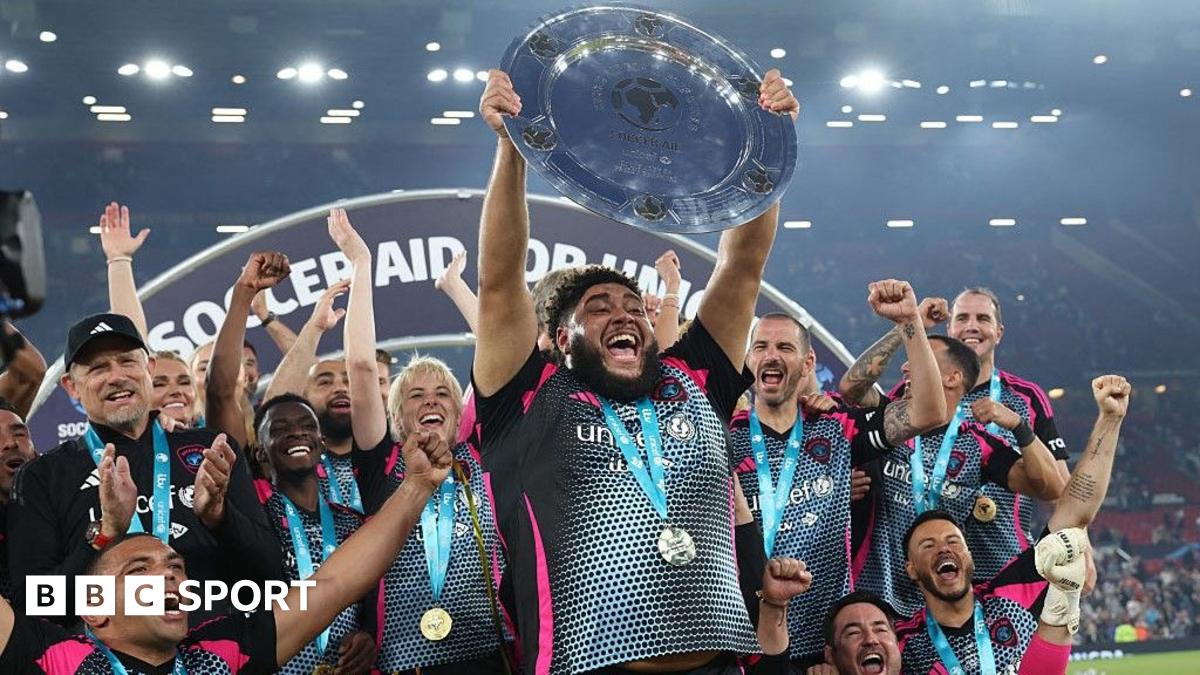Big Zuu scored the winner as a Carlos Tevez-inspired World XI beat England in front of a sellout Old Trafford crowd for Soccer Aid.
In the 14th edition of the annual charity football match between England and a World XI – which mixes celebrities and former footballers – the World XI won 5-4, as £15m was raised for children’s charity Unicef.
They had trailed 3-0 in the second half but turned things around thanks to four goals from former Manchester United and Manchester City striker Carlos Tevez.
All four of England’s goalscorers were former England international strikers, with ex-Tottenham player Jermain Defoe getting a double after former Manchester United star Wayne Rooney and Toni Duggan – who played for clubs including Manchester City and Barcelona – had put England 2-0 up.
Among plenty of former football talents, the two sides featured the likes of former One Direction singer Louis Tomlinson, YouTuber Angry Ginge, Diamond from Gladiator, comedian Richard Gadd, Olympic gold medallist Sir Mo Farah and The Last Of Us star Bella Ramsey.
And while pop star Tomlinson was roundly cheered whenever he touched the ball, the plaudits went to England’s Angry Ginge.
He was named player of the match for a defensive display which included a goal-saving clearance to deny Brazil legend Rivaldo, and some on social media jokingly called for Manchester United to sign him after their poor season in the Premier League.
